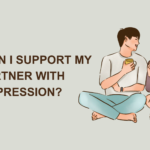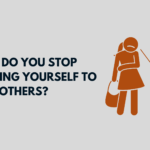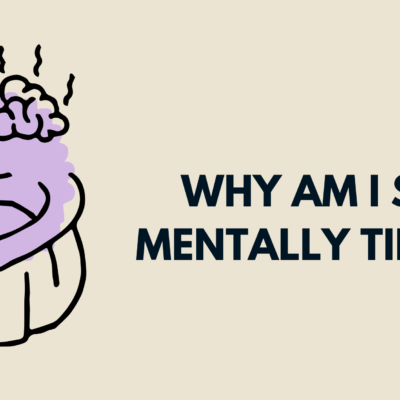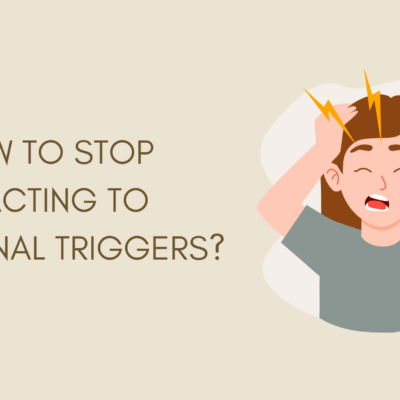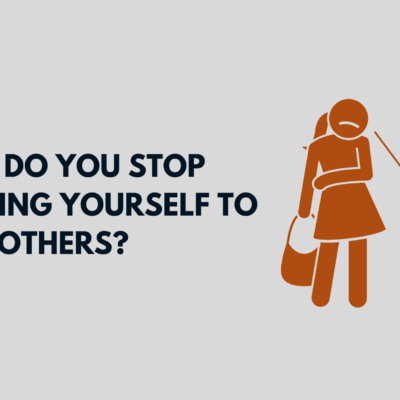How to Release Emotions Trapped in your Body: Have you ever noticed a lump in your throat when you’re about to cry, a tight chest when you’re anxious, or a knot in your stomach when you’re upset? These sensations aren’t random—they’re your body holding on to unprocessed emotions.
Emotions aren’t just “in your head.” They live in your body, influencing your physical health, posture, breathing, and energy. When emotions—especially painful ones—aren’t expressed or processed, they can become “trapped,” creating tension, chronic pain, fatigue, or emotional numbness.
The good news is that your body can release these emotions. With awareness, movement, breathwork, and supportive practices, you can free the stored energy and create space for healing. This article explores why emotions get trapped in the body, signs they’re affecting you, and practical methods to release them.
Also Read:
1. Why Do Emotions Get Trapped in the Body?
Emotions are physiological responses. When you feel fear, your body releases adrenaline, your heart rate rises, and your muscles prepare to act. Ideally, once the emotion has served its purpose, the body resets.
But often, emotions don’t complete their cycle. Reasons include:
- Suppression: You push feelings down because expressing them feels unsafe, inappropriate, or “too much.”
- Trauma: Overwhelming experiences can freeze emotional energy in the body.
- Cultural or family conditioning: If you grew up hearing “Don’t cry” or “Anger is bad,” you may have learned to hide emotions.
- Chronic stress: When stress is constant, the body never gets the chance to fully release.
Over time, this stored tension builds up as muscle tightness, physical discomfort, or even illness.
2. Signs of Trapped Emotions
Not every ache or pain is emotional, but trapped emotions often show up in patterns such as:
- Chronic neck, shoulder, or back tension.
- Digestive issues without a clear medical cause.
- Headaches or jaw clenching.
- Tightness in the chest or shallow breathing.
- Fatigue or heaviness without physical explanation.
- Feeling emotionally “numb” or disconnected.
- Bursts of anger, sadness, or anxiety that feel disproportionate.
If you notice these signs, your body may be holding onto unexpressed emotions that need release.
3. The Mind-Body Connection
Research in fields like psychoneuroimmunology shows that emotional stress affects immune, hormonal, and nervous systems. For example:
- Long-term grief or sadness can weaken immunity.
- Chronic anxiety can keep the body in “fight-or-flight,” leading to inflammation.
- Suppressed anger may contribute to high blood pressure.
Understanding this connection helps you see emotional release as not only psychological but also physical self-care.
4. Methods to Release Emotions from the Body
There’s no single “right” way to release emotions. Different approaches work for different people, and combining several practices can be most effective.
a. Breathwork
Breath connects directly to your nervous system. Shallow breathing keeps the body tense, while deep, conscious breathing helps release stored emotions.
- Box Breathing: Inhale for 4 counts, hold for 4, exhale for 4, hold for 4.
- Sighing Exhales: Take a deep breath and let out a loud, relieving sigh.
- Breath and Sound: Inhale deeply, then exhale with a hum, moan, or even a yell into a pillow.
Breathwork allows emotions to surface gently and move through the body.
b. Movement and Exercise
Emotions are energy—movement helps them flow. Stagnation in the body leads to stagnation in emotions.
- Yoga: Stretches and opens areas where tension is stored (hips, chest, jaw).
- Dance: Freeform movement to music lets emotions express non-verbally.
- Shaking Practice: Stand and shake your arms, legs, and torso for a few minutes. This mimics the natural way animals discharge stress.
- Cardio: Running, boxing, or swimming can release anger or frustration.
The key is to move intuitively, not just mechanically.
c. Somatic Awareness
Somatic practices focus on tuning into body sensations. Simply noticing where emotions live in your body helps release them.
- Sit quietly, scan your body from head to toe.
- Notice tension, tightness, or discomfort.
- Place your hand on the area and breathe into it.
- Ask gently: “What emotion is here? What does it need?”
This mindful attention allows suppressed emotions to rise and dissolve.
d. Journaling and Expression
Sometimes the body holds emotions because the mind hasn’t expressed them. Writing can bridge that gap.
- Free Writing: Write nonstop for 10–15 minutes without censoring yourself.
- Letters (unsent): Write to someone you’re angry at or miss.
- Dialogue Writing: Let your “angry self” and “peaceful self” have a conversation.
Pairing journaling with physical practices deepens release.
e. Creative Outlets
Art, music, and creativity help emotions flow when words fail. Try:
- Painting or drawing your feelings.
- Playing an instrument or drumming.
- Singing loudly, even if off-key.
- Sculpting, gardening, or any tactile activity.
Creativity bypasses logic and taps directly into emotion.
f. Crying and Vocal Release
Many people suppress crying or yelling due to shame. But crying is one of the body’s natural ways of releasing stress chemicals.
- Allow yourself to cry without judgment.
- Scream into a pillow or in your car with the windows up.
- Moan, sigh, or make sounds that feel natural.
Giving sound to emotion frees it from being locked inside.
g. Touch and Bodywork
Physical therapies can help release stored tension. Options include:
- Massage therapy: Loosens tight muscles holding stress.
- Acupuncture: Balances energy flow.
- Reiki or energy healing: Encourages emotional release through subtle touch.
- Self-massage: Use foam rollers or simple self-massage on tense areas.
Sometimes emotions surface unexpectedly during bodywork—this is normal and part of the release process.
h. Mindfulness and Meditation
Mindfulness helps you observe emotions without resisting or clinging. Over time, emotions naturally pass through.
- Practice sitting quietly, noticing thoughts and body sensations.
- Use guided meditations focused on letting go.
- Visualize emotions as clouds passing in the sky or waves on the ocean.
i. Talking and Sharing
Safe conversations with trusted people help release emotions. Bottled-up feelings often soften once spoken aloud.
- Share with a friend, partner, or therapist.
- Join support groups where emotional expression is welcomed.
- Speak honestly, without fear of being “too much.”
5. Creating a Safe Space for Release
Because releasing emotions can feel vulnerable, safety is important. You can create a supportive environment by:
- Choosing a quiet, private place.
- Using calming elements (candles, music, blankets).
- Setting an intention before practice, e.g., “I allow myself to let go of what no longer serves me.”
- Having grounding tools like water, tea, or a journal nearby.
The more supported you feel, the easier it is to let emotions move.
6. Balancing Release with Regulation
While releasing emotions is powerful, it’s equally important to regulate so you’re not overwhelmed. After a release, practice grounding:
- Place your hands on your heart or belly and breathe.
- Drink water slowly.
- Step outside and connect with nature.
- Repeat a calming mantra like “I am safe now.”
This ensures the release feels healing rather than destabilizing.
7. When Professional Help Is Needed
Sometimes emotions are tied to deep trauma or overwhelming experiences that feel unsafe to release alone. In these cases, professional support is invaluable. Therapists trained in somatic experiencing, EMDR, or trauma-informed care can guide safe emotional release.
If you experience:
- Frequent panic attacks.
- Numbness or dissociation.
- Intense suicidal thoughts.
- Overwhelming flashbacks.
Please seek help from a mental health professional. You don’t have to carry it all alone.
8. Making Emotional Release a Lifestyle
Releasing emotions isn’t a one-time event—it’s a practice. To prevent build-up, integrate small habits into daily life:
- Take a few deep breaths during stressful moments.
- Move your body every day, even with a short walk.
- Journal regularly to clear your mind.
- Talk openly about feelings instead of bottling them up.
- Create a weekly ritual—like dance, art, or meditation—dedicated to emotional release.
Like cleaning your home, emotional hygiene is ongoing.
9. The Benefits of Releasing Trapped Emotions
As you practice releasing emotions, you may notice:
- Reduced physical tension and pain.
- Improved sleep and digestion.
- Greater energy and vitality.
- More clarity and focus.
- Deeper emotional resilience.
- A stronger sense of inner peace.
Your body feels lighter, and your mind clearer, when emotions flow freely rather than staying stuck.
Final Thoughts
Emotions are not problems to fix—they are energy to feel and release. When suppressed, they create weight in the body and mind. When expressed safely, they restore balance and freedom.
Releasing trapped emotions is a journey of self-awareness, compassion, and practice. Whether through breath, movement, creativity, or therapy, you can gently allow your body to let go of what it has been holding.
The process may bring tears, laughter, or unexpected memories, but each release is a step toward healing. By honoring the messages of your body and giving emotions space to move, you invite greater vitality, peace, and wholeness into your life.

